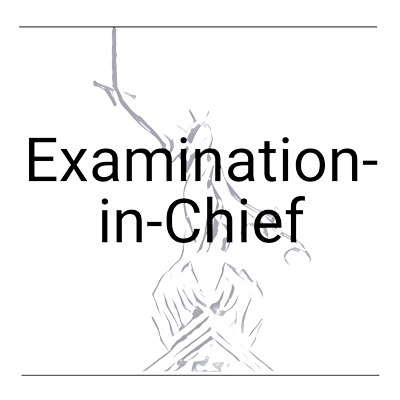Examination-in-Chief
How witnesses are taken through their evidence at trial
All Contents > Witness Evidence and Questioning > Examination-in-chief > Cross-examination > Re-examination
“When witnesses are called to give evidence, they will be asked by the party seeking to rely on their evidence to give their account of what happened (if they are a factual witness) or their expert opinion (if they are an expert witness). This is known as their ‘evidence-in-chief’ and the questioning of the witness at this stage is the ‘examination-in-chief’. ”
On this page:
What is examination-in-chief?
Taking a witness though their evidence
Problem Witnesses - Failing to ‘come up to proof’
Leading the witness (feeding the answers)
Conducting an examination-in-chief
Memory Refreshing
Before and after examination-in-chief
What is examination-in-chief?
When witnesses are called to give evidence, they will be asked by the party seeking to rely on their evidence to give their account of what happened (if they are a factual witness) or their expert opinion (if they are an expert witness).
This is known as their ‘evidence-in-chief’ and the questioning of the witness at this stage is the ‘examination-in-chief’.
In a criminal trial, juries and magistrates do not receive the written witness statements of witnesses who are called to give evidence (except on rare occasions), so it is what the witness says that will be their evidence in the trial.
Some witnesses will give evidence at trial from the witness box, but there are a number of ‘special measures’ available which allow evidence to be given elsewhere such as, for example, giving evidence by live video link from a different location or allowing evidence to be pre-recorded, which avoids the need for the witness to be present in the courtroom at trial.
For more information go to Witness Protection & Support >>
Young witnesses will rarely give evidence in open court and only those aged 14 or over will take the oath or affirm. Unless otherwise stated, the rest of this page assumes the witness is 14 or over.
The witness will start by entering the witness box and taking the oath or affirmation, i.e. “I swear by almighty God/I do solemnly, sincerely and truly declare and affirm, that the evidence I shall give shall be the truth, the whole truth and nothing but the truth.”

















